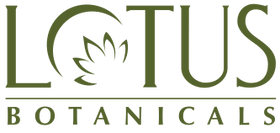
Using a facial cleansing brush for women at the start of your routine helps remove dirt, oil, and makeup, creating a fresh base for serums and moisturizers. The gentle exfoliation provided by soft bristles or silicone heads helps unclog pores and slough off dead skin cells, so your favorite skincare products penetrate more effectively. Whether your skin is sensitive, oily, or combination, incorporating this tool can make a visible difference in how your skin looks and feels.
To get the most from your facial cleansing brush, begin by removing makeup and dampening your skin. Apply a gentle cleanser, then move the brush in small, circular motions across your face—focusing on the T-zone and areas prone to buildup. Avoid pressing hard; let the device glide naturally. For exfoliation, use 2-3 times per week, or daily on the gentlest setting if your skin tolerates it. After use, rinse the brush head thoroughly and allow it to air dry to maintain hygiene.
Selecting the right cleansing method depends on your skin's needs. Devices with soft silicone bristles suit sensitive skin, while more intense settings and nylon bristles may benefit oily or acne-prone skin. If you prefer a gentler approach or want to enhance exfoliation, a plant-based face scrub is ideal. Many find the best results by combining a cleansing brush with a gentle scrub a few times a week. For those interested in natural solutions, scrubs like the Lotus Botanicals range offer effective exfoliation with minimal irritation.
| Product | Type | Key Benefits | Shop |
|---|---|---|---|
| Natural Baking Soda Deep Cleansing Face Scrub | Scrub | Plant-based, deep cleansing, gentle exfoliation | Buy Now |
| Ubtan De-Tan Radiance Face Scrub | Scrub | Brightening, plant-powered, helps reduce tan | Buy Now |
| Vitamin C Skin Brightening Face Scrub | Scrub | Vitamin C, supports skin radiance, gentle exfoliation | Buy Now |
When shopping for a facial cleansing brush or exfoliating scrub, consider your budget and skin goals. Prices for quality face scrubs are typically affordable, making it easy to add effective exfoliation to your routine. Always check product availability and stock status before purchasing. For added peace of mind, Lotus Botanicals offers a straightforward return policy and responsive after-sales support, so you can shop with confidence if you have questions or concerns after your purchase.
Consistent use of a facial cleansing brush for women can refine your skin's texture, help minimize the appearance of pores, and promote a more even complexion. Many people notice smoother, brighter skin and better results from their daily skincare products when they stick to a regular cleansing routine.
Upgrade your skincare routine by adding a facial cleansing brush or gentle exfoliating scrub to your daily regimen. Explore the plant-based options available and select the right product for your needs. Click below to shop online and enjoy healthy, glowing skin.
We offer vegan, cruelty-free facial scrubs and cleansers made with natural ingredients—perfect for pairing with your favorite facial cleansing brush. Visit Lotus Botanicals to explore our full range and discover the right products for your skin.
1. What is a facial cleansing brush for women?
A facial cleansing brush for women is a handheld device designed to remove dirt, oil, and makeup while gently exfoliating the skin for a deeper clean than manual washing.
2. How often should a facial cleansing brush be used?
A facial cleansing brush can be used 2-3 times per week for exfoliation, or daily on a gentle setting if your skin tolerates it. Always follow the manufacturer's instructions.
3. Can a facial cleansing brush help with acne?
A facial cleansing brush can help remove excess oil and dead skin cells, which may support clearer skin. Use gentle settings and avoid overuse if you have active breakouts.
4. What features should I look for in a facial cleansing brush for women?
Look for features like soft bristles or silicone heads, adjustable speeds, waterproof design, ergonomic grip, and a convenient power source such as rechargeable or battery-powered.
5. Are facial cleansing brushes suitable for sensitive skin?
Yes, facial cleansing brushes with ultra-soft silicone bristles and lower intensity settings are suitable for sensitive skin types.
6. How do I clean and maintain a facial cleansing brush?
After each use, rinse the brush head thoroughly, allow it to air dry, and clean it regularly with mild soap to prevent bacteria buildup.
7. How do I choose between a facial cleansing brush and a face scrub?
Choose a facial cleansing brush for deeper cleaning and exfoliation, a scrub for gentle exfoliation, or combine both for optimal results based on your skin type and concerns.
8. Are Lotus Botanicals scrubs compatible with facial cleansing brushes?
Lotus Botanicals scrubs are formulated to work well with facial cleansing brushes, providing gentle exfoliation and supporting healthy skin.
9. Can I buy Lotus Botanicals facial cleansers and scrubs online?
Yes, Lotus Botanicals facial cleansers and scrubs are available for purchase online through the official website.
10. Can Lotus Botanicals scrubs be used with facial cleansing devices?
Lotus Botanicals scrubs are suitable for use with facial cleansing devices, making them a great addition to your skincare routine.
Phone : 1800 1200 36231
Email : care@lotusbotanicals.com
WhatsApp
: +917290031713
Free shipping on order above 599
Your payment information is processed securely.
Please beware of fraudulent messages and phone calls on behalf of Lotus Botanicals. We NEVER ask for bank details, OTPs, advance cash payments or engage in lotteries.